Hey, we should be good at this sport in Wisconsin. We have the cheese.
Now if only we had hills.
Hey, we should be good at this sport in Wisconsin. We have the cheese.
Now if only we had hills.
Marcelo dropped from Lyon first team for “farting and laughing”
Can you imagine if they did this in baseball? Ol’ Babe Ruth would never have hit his first home run. When he wasn’t playin’ the game, Babe’s entire life consisted of farting and laughing.
Probably even when he WAS playing the game.
Good question. Home run rates are declining dramatically. Last year there were 27 at bats per homer. The number is up to 36 this year.
As a result, the major league OPS is the lowest since 1968. You fans know that 1968 was a year when pitchers totally ruled the roost, forcing actions to add offense back into the game. The major league batting average has dropped to .233 this year, eleven points less than last year, despite taking the bats away from NL pitchers. That is even lower than 1968, or any other season in history!
Baseball has such detailed stats now that there is no room for bullshit about the distance the balls are traveling. The stats show that balls launched at the same velocity and angle are not going as far.
So what’s the deal?
One word: humidors
Last year there were 10 teams using humidors. This year it is all 30 teams. This is significant, far more important than the ball specs. I mentioned that the number of at bats needed to produce a homer has increased by nine, but that’s not consistent across all teams. The 10 holdover teams (humidors both years) are producing HRs at about the same frequency as last year (within a third of an at bat), while the 20 teams that added humidors have witnessed an increase of 13 AB per HR.
MLB admits that it did tweak the ball specs, but not enough to produce the power reductions we have observed. They expected hard-hit homers to travel about a foot or two less and the real number has been about five feet. This has an impact on homers, but as noted above, the impact is minimal for the teams that had humidors both years.
The ball manufacturing process seems to have some glitches. Some players have noticed that some balls seem to have stitches raised higher than normal. This is advantageous to pitchers, who can grip the higher stitches to get more spin. Presumably this is a temporary situation which will work itself out as the manufacturing process is perfected for the new ball specs.
Part of the run decline is caused by humans, not humidors.
It’s not just homers that are declining. Both singles and triples are currently at the lowest rate in MLB history, dating back to 1876. There has been such an emphasis on launch angles in the past decade or two that hitters have concentrated on their “positive true outcomes” – walks and homers, which are out of the control of the fielders. In the last pre-COVID year, 2019, homers were being launched at the highest rate in history (one every 25 at bats), far higher than in the steroid boom. (In 2000, the year of peak steroid homers, there was one homer for every 29.4 at bats.)
But if the ball won’t travel out of the park, the hitters “got nothin’.” They need a back-up plan, and they don’t have one.
If the prevailing conditions continue to impede homer production, batters will have to learn to employ different approaches, making contact with a level swing and hitting the ball where it is pitched, rather than just waiting for a pitch they can pull, then uppercutting the ball.
Maybe they’ll even try to steal a base now and then, or leg out a triple.
Many fans would see that as a positive development.
Robinson Cano Will Get About $40M to Not Play for the New York Mets
They apparently outbid the Angels, who offered him only $30 million not to play.
Jokes aside, this is the inevitable product of the clubs’ willingness to give players long-term contracts that extend beyond their useful playing years. Then the clubs’ only choices are to take up a roster spot with a fading (or faded) star, or to pay them not to play. It’s difficult to sympathize with an owner in this situation because they agreed to the contract in the first place, or traded for the guy knowing the reality of the situation.
Cano was a terrific player about a decade ago. In one 5-year period he never finished lower than 6th in the MVP balloting. His lifetime average is .302 with more than 900 extra base hits among some 2,600 total hits. He is among the top ten of all-time in WAR for a second baseman. That is HOF caliber for a second baseman. In fact his stats are better than most HOF second basemen. There are 12 second-basemen in the HOF with a lower lifetime WAR than Cano, and only seven above him. There are good explanations for some of the guys below him: Jackie Robinson’s career was short for reasons we all know; Bill Mazeroski is not in the HOF for his offensive prowess, etc. But even if you scratch those exceptions, he is still better than, or at least equal to, the average HoF second baseman. That’s mighty good.
But he was 36 in his first season with the Mets, so the Mets agreed to pay him about $20 million per year for ages 36-40. That was a big gamble.
Cano is not the only one to receive the largesse of owners agreeing to poorly conceived contracts.
The Angels could have paid Albert Pujols not to play, but they elected to pay him an average of $24 million per year for ten years to be a first baseman / DH with below-average production for those jobs. His line with the Angels was .256/.311/.447. That on-base percentage was not only lower than a typical first baseman, but was also below the major league average for any position in that period. (And that average includes National League pitchers!) In the final half of that contract period, his slash line was .242/.292/.408, which equates to an OPS+ of 87. (That means his production was 13% lower than that of a theoretical average major leaguer in the same offensive context). A young player could keep a place in the line-up with numbers like that only if he happened to be a slick-fielding middle infielder. A young first baseman with that kind of MLB production, in lieu of $24 million, would be handed a bus ticket to Texas to suit up for the El Paso Chihuahuas.
Villanova-Kansas went just about exactly as I expected. Twelve different Jayhawks got in the game, which tells you all you need to know. It’s not often you get to play the scrubs in the Final Four. They got off to a 10-0 start and built the lead to 19. You have to credit Villanova. Although out-manned and far behind, they played well enough to get the game within six at one point.
Although both teams played well, Kansas came up with a tough combination to beat – their big guy was 10-for-12 inside, and their outside shooters shot 54% from three-point range, including 6-for-7 from their first team All-American. To top that off, they ran a trapping, pressing defense without fouling much, and they didn’t turn the ball over a lot. Given all of that, they would have beaten any team today. If they can repeat that performance, they will go home with the trophy.
—-
Ol’ Coach K did not get his storybook ending. His traditional kinda-crosstown rival, UNC, managed to defeat him in his last game. The same team had already managed to defeat him in his last home game.
Saturday’s game could not have been closer. The teams were never far apart, and it could have gone either way at the end. It went UNC’s way because the ball bounced that way and they made some key plays in crunch time. It was their day. Duke might work the ball better, and they almost never turn it over (just 4 times to UNC’s 10), but UNC once again absolutely owned the glass. Armando Bacot was superlative again, with another game of 20+ boards, but his teammates also secured some clutch caroms. The team gathered in 50 misses off the glass.
There was some worrisome news toward the end for UNC. Robo-rebounder Armando Bacot appeared to turn his ankle with about five minutes to play. The big guy had to be helped off. He did come back to finish the game until he fouled out, but he was wincing and limping the whole time. In my opinion, they can’t challenge Kansas without him.
What about WITH him? Well, North Carolina has had an amazing run in this tournament for a #8 seed. They’ve already knocked off a #1 and a #2. They are underdogs, but don’t count them out.
—————-
Kansas Jayhawks odds: bet 190 to win 100, 4.5 point favorites, over/under 153.5
When you look at the final score of the Miami-Kansas game, it seems impossible to believe that Miami had a solid lead at halftime. Kansas then proceeded to blow them out. Consider this: Kansas scored 76 points, so let’s divide that into even halves of 38 each. While Kansas scored their first 38, Miami scored 40. While Kansas scored the second 38, Miami scored only 10.
Ten!
I’ve been kidding about Miami’s players being so old they live in an assisted living dorm, but it didn’t seem like kidding in the second half of this game. Kansas ran them so ragged they were shitting in their Depends. Those old geezers really could have used that oxygen.
As for the double-dicks … as they say in their Jersey City home – fuhgitaboudit. That first half was painful to watch. Those kids did great, but North Carolina was their Waterloo.
Remember what I said about UNC’s Armando Bacot being the new Rodman? Well, the scorecard says he “only” had 22 rebounds in this game, which is a big number in 35 minutes of play, but it seemed more like 52. That kid was everywhere.
While the St Peter’s story line failed to produce a Hollywood ending, it worked out exactly right to set up Coach K’s swan song. It will be Duke against North Carolina in the semi-finals. The teams met twice during the year. Duke won the first one easily, 87-67, but North Carolina came back with a vengeance, scoring 94 points – including 55 in the second half – to spoil Coach K’s final game on the Duke home court. Four UNC starters scored 20 or more in that game.
I had to look this up: Duke and North Carolina have played each other 257 times in history, but they have never met at the NCAA tournament. Coach K’s storied career could end with a dramatic defeat, with his main rival spoiling both his last game at home and his last game away from home, or he could use that once-in-history meeting to get revenge for that home loss, as a launching point for his final championship bid. It’s a good story either way, unless he wins against UNC and gets his ass kicked by Kansas. Those mean old Jayhawks (or less likely, Villanova) could certainly spoil the script.
Today’s final scores were about what you’d expect in the first round, when the top seeds play the marginal teams, but come to think of it, Miami and the Double Dicks were double-digit seeds, so I guess their expected first round routs just came a little late.
Final Four odds
(1) Kansas -4 vs. (2) Villanova
(2) Duke -4.5 vs. (8) North Carolina
Futures odds (to win it all)
Duke +150
Kansas +190
Villanova +450
North Carolina +550
#2 Villanova ground it out for a win over Houston. It was a good defensive battle but also another display of poor shooting. Houston was 1-for-20 from beyond the arc and missed ten of the last eleven shots they tried. Villanova wasn’t that much better, shooting 29% from the field, but they did make an occasional three, and went 15-for-15 from the stripe – enough to win. Villanova is in the Final Four, but will have to play much better than that to beat the winner of the Kansas-Miami game (presumably Kansas).
The final margin of nine doesn’t reflect how completely Duke dominated Arkansas. They were up 72-54 and then finished on cruise control. Arkansas played well, but Duke was just better.
Duke plays too much one-on-one ball for my taste. They basically play only six players and they don’t pass much, preferring to isolate the man with the ball and let him create shots off the dribble, looking for the offensive board if he misses. But they have the talent for that strategy, and a good coach comes up with a strategy to match his talent. You know any team run by Coach K is going to play smarter ball than the kind of play we saw from Houston or Villanova. Duke rarely took threes, letting them fly only when they had a reasonable chance to make them (4-for-10), and spent the rest of the game penetrating. They shot better than 50% from the field and went 16-for-18 from the charity line. They held Arkansas to only 25 rebounds in the entire game.
That gives Coach K the record for the most Final Four appearances. Their next game will be against either a #8 seed (UNC) or a #15 (the Double Dicks, of course), so the Blue Devils will be heavily favored even though they split with UNC during the regular season. The likely Duke-UNC match-up creates a dream story line for Coach K. Can he beat the regional rival, whose campus is just a few miles from his own, in the semi-finals, then bring home a championship in his final game of his final year? Hollywood couldn’t write it any more dramatically.
Rich Eisen knows more about football than I will ever know, but he may have forgotten Bud Wilkinson, who took over the Cardinals when Don Coryell split for San Diego. Wilkinson was so disappointing that he was dumped in the middle of season two of a guaranteed four-year contract. They were happy to pay him NOT to coach.
The Bleacher Report considered this matter and only considered Wilkinson the 9th-worst. Their choice: Marty Mornhinweg
PEACOCKS pic.twitter.com/IuuMeQPMb4
— Cameron DaSilva (@camdasilva) March 26, 2022
The 15th-seeded St Peter’s Peacocks, aka the Jersey City Double Dicks, continued to lift themselves out of the Chasm of Obscurity with yet another spectacular upset, this time over 3rd-seeded Purdue. The ‘Cocks were out-rebounded by a mile (37-26) and out-shot (43% to 39%), but that didn’t seem to matter, as they became the first #15 seed ever to make the Elite Eight. (And no 13s or`14s have done it!) Their next game will be against North Carolina, and they have a good chance there because they have already beaten better teams to get this far. Can they make the final four? Is there any sports fan in America not rooting for them?
Their victory was a tribute to sound fundamentals. The Peters pulled off 9 steals, forcing fifteen Purdue turnovers while making only eight, but more important than that, they went to the line 21 times and made 19 of them. If their free throw percentage had been a respectable 70%, they’d have lost, but it was 90%. Practice your free throws, kids. They win games.
#1 Kansas won, but you have to give the kids from Providence credit. They were just frightful at the start of the game. They missed their first eight jumpers, and by the time ten minutes had elapsed, they had not scored from any spot out of reach of the rim. They fell behind 22-10 in the early going, and only scored a pathetic 17 points in the first half. They could have been demoralized by that, but they really took it to Kansas in the second half, and at one point they actually held a 48-47 lead. I was rooting for them to hold on, but, well, Kansas didn’t get that #1 seed out of charity, so the Jayhawks eventually got their tempo back and won. Give Providence a gold star for recovering from that 17-point first half with 44 in the second.
This game was once again a demonstration of poor shooting, as so many have been in this tournament. Providence shot 34% from the field, 17% from three-point range, and got 11 of their shots blocked. Kansas was about the same, even worse from beyond the arc (39%-13%). The two teams combined for 6-for-38 on three pointers, as they competed for the Iverson award.
I turned off the North Carolina game when they were down 56-51 and playing like slugs. I was thinking “I wish I hadn’t predicted their victory,” and regretting all the nice things I said about them. Then I checked the internet to get the final score. WTF? I can only guess that the UCLA players never came out for the last quarter and decided to hit the clubs before they closed. UNC moves on to play the Double Dicks on CBS Sunday afternoon.
Carolina’s Armando Bacot looks like the Rodman of the future. The stats don’t indicate that he got every rebound in the game, but it surely seemed that way.
Miami played their usual good basketball, which they have to do because they’re not going to overpower anyone by playing four guards and a forward. Despite their lack of muscle inside, it’s difficult to believe they were a 10th seed. They are just plain good. As always, they passed to the open man, took smart shots, pressed hard on defense, forced turnovers, made no dumb fouls. Iowa State was awarded only four foul shots in the entire game, making just two, and Miami pulled that off despite the fact that they are constantly harassing on defense. They’ll take it from you slicker than a pickpocket in the Paris Metro.
On the other hand they have the second-worst uniforms in major college hoops. (Oregon still has to take the top prize.) Why are the Hurricanes playing in their underwear?
If you look at their stats every game, they almost always make fewer fouls than their opponents, force more turnovers, make more steals, make more assists, and almost always shoot for a higher percentage. Jim Larrañaga gets my vote for coach of the year. (Remember when he took the George Mason Mints to the Final Four?) As impressed as I am with Miami’s coaching and discipline, I don’t think they can keep winning. They just get killed on the boards in every game. But I’ll be pulling for those scrappy, undershirt-wearin’ mofos.
Unless they end up against the Double Dicks, of course.
As I noted last week, Jeff Sagarin’s computer system certainly had Houston nailed. His ratings indicated that they were one of the top five teams in the nation, and were therefore radically underrated as a #5 seed. That has been proven. They beat a #4 seed by 15 points, and followed that up by beating a #1 seed by 12. They held Arizona to 33% from the field. End of story.
Arkansas also proved to be a real powerhouse. During the regular season they beat a team (Auburn) that was rated first in the nation at the time. They did it again Thursday with a victory over Gonzaga, which was not just a #1 seed in the tournament, but was also the #1 team in the country. Thursday’s game was almost dead even except for the turnover comparison: fifteen for the Zags, only eight for Arkansas.
Statistical oddity: According to Sagarin’s rankings, LSU was one of the top 25 teams in the country this year, and Arkansas beat them three times!
Duke and Texas Tech see-sawed throughout the game, which Duke finally won with a last-minute switch-up to man-to-man D, coupled with some excellent sharpshooting. They shot 88% from the stripe and 52% from the field, including their last eight in a row. Tech was the one team so far that least deserved to lose, but hey, only one team can win per game. Coach K goes to the elite eight for the umpteenth time. (He has reached the Sweet 16 on 25 occasions, six more than any other coach in NCAA history. He has advanced to the Elite Eight 16 times, the Final Four 12 times, and has won it all 5 times.) The entire college game will seem to have a missing piece when he retires after this tournament. There must have been a time before he was a coach, but I can’t remember it. In fact nobody can, except those Miami players who are in their 53rd year of college.
11th-seeded Michigan gave it the ol’ college try, but their long-shot did not come through. Villanova advances.
Plenty of nekkid women. No idea who any of them are.
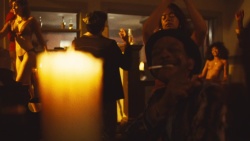
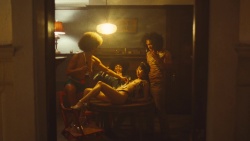
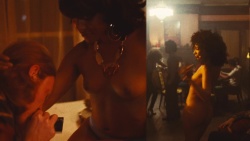
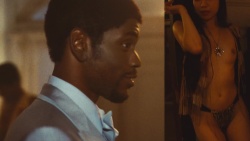
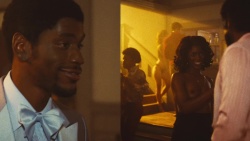
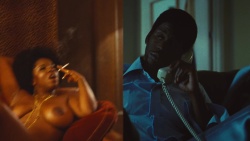
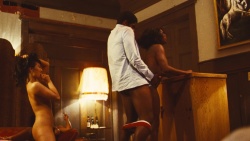
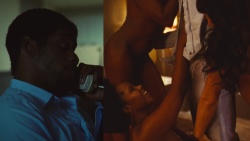
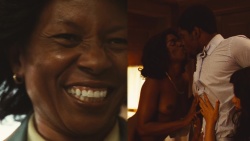
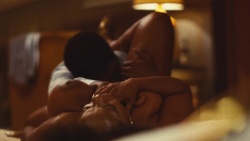
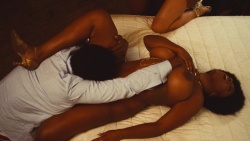
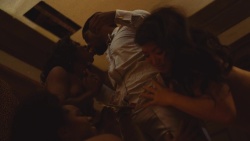
But there are plenty of obscure sub-plots for sports geeks.
First, there’s the tale of Leon (Lee) Riley, father of the ultra-successful Lakers coach, Pat Riley. Lee’s story was really emblematic of an era in American sports that no longer exists. From the 19th century until about the 1960s, it was possible to be a career minor league ballplayer, thrilling small-town fans in the summer and working pedestrian jobs in the off-season. Lee Riley was such a man. His career got off to a promising start at age 20, when he found himself in single-A ball in his first year as a professional, by-passing all the lower levels except for a very brief stint (23 games) in class D. In his first full season in the tough Western League, he tore it up at the plate, batting .370 with tons of extra base hits. He was the league’s best hitter for several seasons, but developed a reputation as an inept glove man with a weak arm. As one observer put it, “He batted .375 but his fielding average was just about the same. He couldn’t field pumpkins if they were tied in a sack.” So he worked and worked on his fielding until he earned a well-deserved promotion to the Rochester Red Wings, the top farm club of the St. Louis Cardinals, with his major league dream seeming within his grasp.
And then he ran smack into the Peter Principle, which suggests that each person rises until he reaches his level of incompetence. For Lee Riley that level was the International League. He batted only .276 with no power at Rochester, in an age when just about every major league outfielder batted .300 or better against actual major league pitching. It was especially difficult to break into the St. Louis Cardinals’ line-up. In 1930 the St. Louis Cardinals were the highest-scoring NL team of the 20th century. They had 13 players with 100 at bats or more, and twelve of them batted in the .300s. When Leon Riley went to Rochester, the Cardinals were the defending World Series champions, and it was soon obvious that Lee could not fit into their major league plans.
How did his performance drop so dramatically from class-A ball to AA? Lee himself said that it was because he couldn’t hit lefties at that level. That formed the basis for one of Tommy Lasorda’s best stories, as recounted in the L.A. Times, July 13, 1988:
When Tom Lasorda was pitching for Schenectady of the Canadian-American League in 1948, the manager was Lee Riley, father of Laker Coach Pat Riley.
“We were playing Gloversville, and I’ve got ‘em beat, 2-1, and it’s in the top of the ninth inning. As I go out to pitch, Riley, who was coaching third, came to the mound, picked up the ball to hand it to me and he says to me, ‘You’re in good shape. You’ve got three left-handed hitters in a row.’ And I was a left-handed pitcher, which meant things should be easy.
First left-hander doubles. Next left-hander triples. Next left-hander doubles. And now they’re winning, 3-2. And he comes to take me out, and as he starts to take the ball from my hand, he looks at me and he says, ‘Know why I couldn’t hit in the major leagues?’ I thought that was a very unusual question, but I said, ‘No, Skip. No, why?’ And he said, ‘Because I couldn’t hit left-handed pitchers. But if you’d been there, I’d have been a star.'”
But an equally cogent explanation was given by sportswriter Whitney Martin. Lee could not hit the curve at that level.
Whatever the explanation for Lee’s failure, the Cards would soon assemble the famed Gas House Gang win another championship – without Lee Riley, who would by then be playing in a C league.
That’s how his life went. He’d have a couple of good years, earn another promotion, then find himself back at a lower level than when he started. By the time 1938 rolled around, he was a 31-year-old veteran of 12 minor league seasons, but was in D ball with the 19 year olds, playing full-time while also acting as the team’s manager. He once again tore it up at the low levels, batting .365 and .372 in those two years in class D. That superlative performance temporarily stalled his managerial career, since his hot bat earned him yet another promotion to the International League as a player, this time with a Dodgers farm club. The result was even more disappointing than his first trip through that league. In 38 games he batted .212 with one homer. By then he must have understood that the majors were only a dream, but baseball was his job and he was no quitter, so he accepted another demotion and resolved in earnest to seek a managerial job. He found himself as a player/manager in a C league, where he had his best season to date, batting .391 with a league-leading 32 homers in the obscure Canadian-American League.
Given his track record, a solid performance at such a low level would not normally have led him back on a path to the majors, but fate intervened, in the form of Adolph Hitler. America needed able-bodied young men to fight in WW2, including young ballplayers. While the best and youngest major leaguers went to bat for Uncle Sam, the desperate major league teams were looking for bodies to fill out their depleted squads. This opened spots for older guys who would otherwise have retired, for a one-armed outfielder, for a 15-year-old pitcher, and especially for career minor leaguers desperate for a chance at the big show. That was Leon Riley’s cue. He was too old, and had a family to support, so he could not be drafted, and the Philadelphia Phillies eventually offered him a spot on the roster in 1944. He was a 37-year-old major league rookie.
Which is worse, never to get a chance to prove what you can do, like Moonlight Graham, or to get a chance after two decades of trying, only to prove that you really couldn’t do it, like Leon Riley? Facing only the diluted wartime pitching of 1944, he batted an embarrassing .083 before the Phils demoted him to the Utica Blue Sox, roughly the American equivalent of being sent to Siberia. The next year he found himself back in D ball yet again, playing against kids who could be his children, starting from the lowest player-manager level for the third time in his career, hoping once again to move up the managerial ladder. He was not a man who gave up easily, so he stubbornly lasted five more years in the low minors as a player/manager in the Phillies’ farm system. As a player, he would never again reach as high as single-A, the level where he had played in his very first year, nearly a quarter of a century earlier.
When he finally stopped playing, he stayed in the Phillies’ organization as a full-time minor league manager, and was awarded some promotions until he was finally back in class A, as manager of the Phillies’ Eastern League teams in 1950 and 1951. The Phillies did a bit of manager-swapping in 1952, and Riley found himself managing the Wilmington Blue Rocks, who posed a respectable 72-66 record in the Interstate League. Unfortunately, the economics of baseball were changing. The Wilmington Blue Rocks went belly up. The entire Interstate League collapsed. Facing a dwindling bottom line, the Phillies announced after the 1952 season that they were trimming their farm system from 12 teams to 9. Along with many others, Leon Riley lost his job that day, his baseball odyssey complete after 11 years as a manager, and a playing career that spanned 22 summers. He had accumulated more than 2,400 hits in pro baseball, including about 900 for extra bases, in the process of compiling a .314 lifetime average. At various times he had led minor leagues in doubles, triples, home runs, walks, RBI and batting average. He had once managed a team to a pennant. He had always done what was asked of him, having played D ball at age 20, then again at age 30, and finally at age 39. Despite his loyalty and hard work, he found himself unemployed at 46, with no non-baseball job skills. Feeling betrayed and abandoned, he went up to his attic and discarded all of his memorabilia dating back to the mid-20s, symbolically casting baseball out of his life, as documented by the eyewitness testimony of his son, the future Lakers coach.
This explains why the Pat Riley character in Winning Time walks around with his dad’s fire-damaged bat. The implication is that the dad tried to burn it and the son rescued it from the fire.
The second obscure tale involves another fella, name o’ Jack McKinney. You may not remember him, but he was once the Lakers head coach – for a grand total of 14 games! Obviously, he did not achieve the level of fame of Pat Riley, Jerry West or Phil Jackson, but he was important to the franchise. Through 1978-79, the Lakers had been playing a very slow, very traditional type of ball, using the usual man-to-man defense, and an offense that consisted of getting it to Kareem and letting the big man do his thing. When McKinney took over from the disgruntled West in 1979-80, he found himself working with a new owner open to change, and a slick rookie named Magic Johnson, who would prove to be one of the greatest players in history. McKinney decided to institute a running offense and a controversial zone defense, technically illegal at the time, that would remake the Lakers, bring them an immediate championship, and became the hallmark of their play in the subsequent years.
So why don’t you remember him? Those 14 games were his entire Lakers career. Shortly after the season began, he went out to ride his bike one day and took a near-fatal spill. A head injury resulted in a coma. By the time McKinney was ready to return, the Lakers owner no longer wanted him back, and he ended up coaching the Indiana Pacers. He did get picked as coach of the year in his first year with the Pacers, when he took the team to the NBA playoffs for the first time, but it was all downhill from there. The head injury had taken its toll on him. His players told the local media that McKinney had had memory lapses while coaching.
His Wikipedia entry sums up his contribution to the Lakers: “Pat Riley won four titles with the team and became the coach most synonymous with the Showtime Lakers. However, Norm Nixon credited McKinney with creating Showtime. ‘That should never be forgotten,’ said Nixon. According to Riley, McKinney ‘might have won five or six titles for the Lakers in the ’80s’ were it not for his accident. McKinney was deferential. ‘I just put in some ideas that were accepted, and the rest was up to Paul and Pat and some great players.'”
Jeff Sagarin’s computer rankings indicated that Houston was significantly underrated with a #5 seed. It seems he was right, at least to the extent that Houston had little trouble with #4 Illinois. Houston won the battle of the rebounds 39-33, despite the intimidating presence of the Illini’s monstrous big man, Kofi Cockburn, a first team All-American. Houston also won the turnover battle 9-17, and made six blocks to Illinois’ two. That set of numbers created 18 more opportunities for Houston than for Illinois, and they rode that to a 15-point win.
I can’t tell you whether that happened because Houston was underrated or because Illinois was overrated, because Illinois has been unimpressive in recent appearances. The Illini again shot poorly against Houston, posting a FG% in the 30s for the third consecutive game. Those three games provided an ignominious conclusion to what had been a good season. Despite having the top seed, they lost in their very first game of the Big Ten tournament, then they barely lucked out a win after being outplayed by unheralded Chattanooga throughout most of their first round game this weekend, then they got their asses handed to them by Houston today.
Sagarin was also on the money about Auburn. His calculations indicated that they were nowhere near good enough to be a #2 seed, and boy was he right about that. Miami led that game wire-to-wire, and the second half was a total blowout.
Miami surprised me. That is a well-coached team. They don’t commit any dumb fouls; they don’t turn it over; they hustle like mad on defense; they find the open man; they take smart shots. In their first tournament game against USC, they committed only three turnovers, while forcing 18 from the Trojans. Today’s game against Auburn was an instant replay. They committed four turnovers, while forcing 13. And they need to do all of those good things, because they don’t have much muscle, so they aren’t going to get many second chance baskets. They had only six offensive rebounds in the whole game today, compared to 17 for Auburn.
By the way, I’m not sure how those NCAA eligibility rules work, but Miami has some very old players. I mean these guys were reminiscing about how they first convinced James Naismith to cut a hole in the bottom of the peach basket so they wouldn’t have to climb up and get the ball after every score. They’re the only college guys who live in an assisted living dorm. I guess that explains why they don’t crash those offensive boards – they’re afraid of falling and breaking their hips. You think I’m kidding, and of course I am, but just barely. Charlie Moore and Kameron McGusty were freshmen in 2016! We kidded my cousin Walt because he took several years to get through college, but he seems like an accelerated student compared to these guys.
It was not a good opening weekend for the Big 10. They sent three first-team All-Americans into the Thunderdome. Three men enter – no men leave. All three of their teams lost. Since Kentucky also lost, only one of the five first-teamers will be in the sweet sixteen. (Ochai Ogbani of Kansas.)
Eight Big Ten teams made the tournament. Only two survived, including neither the two regular-season co-champs nor the winner of the conference tournament. The two that managed to survive were Purdue and the 11th-seeded Cinderella team from Michigan.
In addition to Michigan, three other teams advanced to the sweet sixteen with double-digit seeds – and one of them will make the elite eight for sure, because Iowa State and Miami will play each other in the next round. The fourth one, needless to say, is the 15th-seeded Double Dicks, who will take on Purdue next.
Teams to watch:
The St. Peter’s Peacocks, the team I call the Double Dicks, are going to the sweet sixteen. After their upset of Kentucky, they followed up with a win over Murray State, another team from Kentucky, which came into the game with a 31-2 record and a 21-game winning streak. This is only the third time in history that a #15 seed has made it to the round of 16.
Baylor became the first #1 to fall.
As you undoubtedly know, they are the defending national champions and started this year with fifteen consecutive wins and a number one standing in the polls. They seemed on their way to defending their title, but it all fell apart when they made a road trip to Kansas, where they were absolutely humbled, scoring only 21 in the first half on their way to an 83-59 curb-stomping. They have not been the same since. They failed to lead the conference in the regular season, then failed again in the post-season conference tournament.
They almost pulled off today’s game against eighth-seeded North Carolina by overcoming a massive deficit, only to fall in overtime, but they were outplayed. They were out-rebounded 47-38, and shot only 35% from the field, including only 24% from beyond the pale. Baylor did force an absolute shit-ton of UNC turnovers, which created plenty of opportunities, but they typically sped down the court and missed the shots. It’s astounding that they were able to create 81 shots, compared to only 57 for UNC, but games are won by making shots, not taking them. Basketball is a complex and demanding game that requires quick thinking, a variety of great athletic abilities and great team strategy, but none of that does any good if you can’t get the ball in that hole.
#3 Tennessee was overwhelmed by a tremendous second half rally by #11 Michigan. Michigan started this tournament with a mediocre 18-14 record, the worst W-L record in the tournament, but as Sagarin points out, they play the toughest schedule in America, so they are no strangers to the kind of stiff competition encountered in March Madness. This marks the fifth consecutive year in which they have made the Sweet Sixteen. No team has a longer streak.
#1 Gonzaga looked very vulnerable when they took a ten-point halftime deficit to the locker room, but they came back to defeat #9 Memphis.
Saturday’s scoreboard here.
There was nothing extraordinary in Friday’s recap. Wisconsin and Illinois had close calls, but survived.
Two 11-seeds and a 10 snuck through, but that’s to be expected. The only real surprise was the total ease with which #11 Notre Dame handled #6 Alabama. Maybe it was motivated by revenge for those curb-stompings on the gridiron. Notre Dame has very little inside game with their four-guard offense, but shot 63% from three-point range, led by 7-for-9 by Cormac Ryan.
Illinois should have lost to Chattanooga. Chattanooga jumped off to a 20-6 lead, and led during the entire game except the last 46 seconds, then took back the lead with 12 seconds to go. After Illinois sunk two free throws to take back a one-point lead, the Choo-Choos missed two opportunities to sink the game winner, thanks to a critical block and then an important rebound by a determined Illinois forward. That was not a fun game to watch. Neither team could put the ball in the hole. The Choo-Choos (actually the Mocs) shot only 32%. Their starters shot 15-for-51, and the team made only one field goal in the game’s final 7:50. Illinois also finished with a FG% in the 30s, including 3-for-17 from outside their calling area. You knew there wasn’t much hope from three-point territory because these guys couldn’t even make free throws – both team’s percentages were in the 50s from the charity stripe.
Obviously, the big upset of the day was #2 Kentucky’s loss to St. Peter’s of Jersey City in OT. As inevitably happens in this tournament, I had no idea what to call the team from St. Peter’s. I don’t think I knew that there was such a team. For the record, they are the SAINT PETER’S PEACOCKS. I did not make that up. They really named a team the “cocks” when they already had “peters” in the school name. It’s the ol’ double-dick! Have we learned nothing from Seinfeld? You never double dick.
(Related: I play pickleball with a guy named Dick Johnson who is nicknamed, predictably, “Double Dick.”)
Anyway, setting my usual bullshit aside for a moment, you may wonder how the Penis Pair even got into the NCAA tournament in the first place. Total fluke. Here’s the deal on their conference championship: Favored Iona, which had defeated St. Peter’s twice during the regular season, was upset in an early round by lowly Rider University (14-19, rated 238th in the nation). Unsurprisingly, Rider itself was soon eliminated, which eventually left St. Peter’s with a cakewalk in the finals against Monmouth (158th in the country). None of that matters now. The only key point is that St. Peter’s beat Kentucky fair and square. Hey, what can ya say about those Peacocks? This dog had its day.
Now I want them to go all the way. Go Double Dicks!
In other bracket-busters, a couple of #5 seeds were sent packing: Iowa lost to Richmond, and UConn lost to New Mexico State.
The play-in games are today already. Here is the full line-up.
Here are the pre-tournament rankings from the polls, with the #1 seeds in the top four slots.
Sagarin’s computer rankings are very comparable. He would send the same four teams to the tournament as #1 seeds, but diverges from the polls and the tournament seeders on the #2s. The most dramatic gap is in the case of Houston. The polls rank Houston 15th, and the high sheriffs of seeding didn’t even place them that high, but Sagarin’s method says they are the 5th-best team in the nation, just barely behind the #1 seeds. On the other side of the ledger, his calculations indicate that Auburn is not strong enough to merit a #2 seed, so he would have given that slot to Houston, which actually received a lowly #5 seed, placing them outside the top 16! The computer differs on two other #2 seeds, but that’s just a matter of flipping #2s and #3s.
Both Sagarin and the polls rate Gonzaga far above any challengers, despite their soft schedule. They are ranked 104th in strength of schedule, while Kansas (for example) grinds it out against the 4th-hardest slate of opponents.
I know that Sagarin uses some complex math in his calculations, while I had to rely on my eyeballs, but I can’t agree with his assessment of Houston. They played only two of the top 25 teams, and lost both games. At a quick glance, their schedule looks much weaker than Gonzaga’s, although his calculations indicate otherwise.
Per Sagarin, Michigan played the toughest schedule, which is how they earned a respectable #11 seed with a record barely above .500. They played 11 games against the top 25 teams, with a 3-8 result.
Purdue won the most games against top 25 teams. They were 8-4. The Wisconsin Badgers had only one less victory and a better winning percentage at 7-2.
Poor West Virginia and Missouri lost the most games against top 25 opponents. They were each 1-10 against that group. Northwestern actually did a little worse, at 0-9 against the big boys, but hey, they’re Northfuckingwestern, where the basketball team probably has to take tests in Advanced Russian Grammar and Quantum Mechanics on game day.
Aka Scott Hall, rasslin’ superstar, coolest kid on the block, founding member of the New World Order.
If you have been watching Winning Time, you know that is leading up to the 1980 NBA finals. The Lakers won, thanks to Magic’s incredible game six, when he started at center to replace the injured Kareem, an amazing feat for a rookie point guard. Before that, however, came the razzle-dazzlest play of the Doc’s dazzling NBA career, when he made a layup from behind the backboard in game four. He created enough hang time to smoke a cigar, nailed the shot, then collapsed to the floor before hustling back on D.
* I specified NBA because Julius did this kind of thing almost every game in the ABA, when he was highly encouraged to put on an individual show, given that his aerobatics sold tickets, and the league needed that desperately.